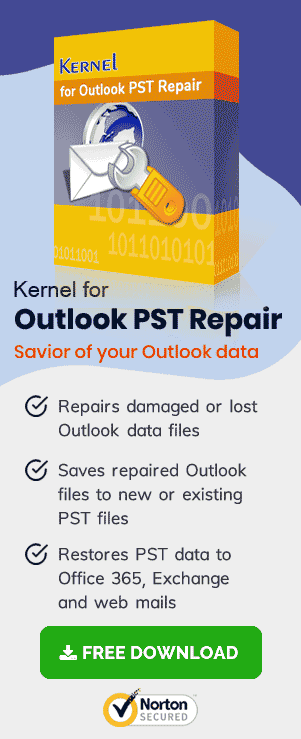Microsoft Outlook is an excellent email management application that offers several beneficial features. One of the helpful features that strike out the most is the inbuilt Calendar feature, which many Outlook users are unaware of. If used correctly, it can very well become your personal assistant, using which one can schedule tasks, set up reminders for any upcoming events or meetings. Outlook will send you reminders, which you can right-away dismiss or snooze. In many cases, users never really take full advantage of the features that the Outlook calendar has to offer. Some of the promising features of Outlook calendar are listed below:
- Create appointments in a jiffy
- Collaborate better with people and organizations
- Quickly view and schedule group activities in your organization
- Possibility to create calendars for work and personal use
- Availability of overlay feature
- Easily synchronize SharePoint calendar
- Subscribe to internet calendars
- Easily share a calendar to contacts as an attachment
- Manage another user’s calendar
Just like any other Outlook mailbox item, Calendar too is prone to corruption and data loss. Several prominent reasons, such as PST file corruption, malicious attacks, and firmware damage, are responsible for the corruption of the Outlook Calendar.
Following are the three prominent methods that can counter the corruption of Outlook calendar:
Method#1: Recover Mailbox Items from the “Deleted Items” Folder
If you have accidentally deleted the Outlook Calendar, then there is a way to recover it. In Outlook, all the deleted items are sent to the Deleted Items folder, which is like a Recycle Bin of MS Outlook. The Deleted Items folder has a retention period (can be adjusted from the settings), after which these items are deleted from this folder, hence making it difficult to retrieve. By default, Outlook removes the items in the deleted folder once you exit the application, to avert this follow the steps mentioned below:
- Go to the File pane > Options.
- In the Outlook Options window, from the left pane select Advanced.
- Under the Outlook start and exit section, make sure that Empty Deleted Items folders when exiting Outlook are unchecked.
Note: It is to be noted that the aforementioned steps need to be executed prior to the occurrence of this issue, as this is just a preventive measure.
To move the items from the Deleted Items folder, back to any other folder, follow the steps outlined below:
- Launch Outlook and navigate to the Deleted Items folder.
- Right-click the items that you want to recover and select Move > Other folder.
- Locate the required folder and move the Calendar there. Click OK.
Method#2 Recover Mailbox Items that are No Longer in Your Deleted Items Folder
If you don’t see the mails in the Deleted Items folder, there is no need to panic. Just follow the below instructions:
- Go to the Deleted Items folder.
- Under the Home, Screen select Recover Deleted Items from Server. This will open up the Recover Deleted Items window.
- Select all the items that you would like to recover. Select Restore Selected Items option and click OK.
- Your recovered items will be moved to the Deleted Items folder. From there, you can move these items to any other folder.
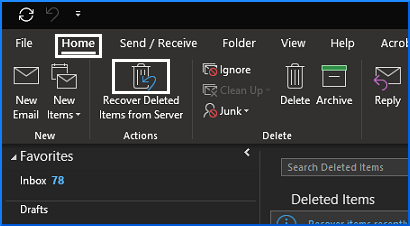
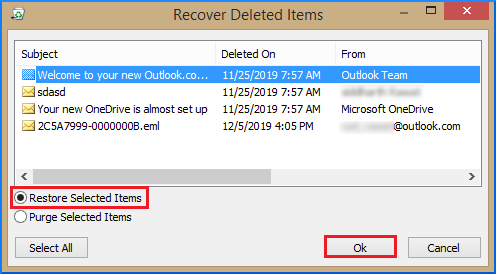
Method#3 Repair Corrupted Calendar Items Using Inbox Repair Tool
In Outlook, the mailbox items, including the Calendar, are stored in a PST file. It is often the case that the PST files become inaccessible due to file corruption. These files have to be repaired to make them accessible again. For a mild file corruption issue, MS Outlook has an inbuilt repair tool (Scanpst.exe). To repair any PST files with manual technique, follow the steps mentioned below:
- For various Outlook versions, the scanpst.exe file location can vary. The location of scanpst.exe for all the Outlook versions are given below:
- Launch scanpst.exe tool.
- Next, you need to look for the affected PST files. In most of the Outlook versions, the PST files are stored in the following location:
- The tool starts to check for consistency.
- In case of any inconsistencies, click Repair.
- Next, you will get a message after the successful repair. Click OK to exit the tool.
- Now, try to access your Calendar.
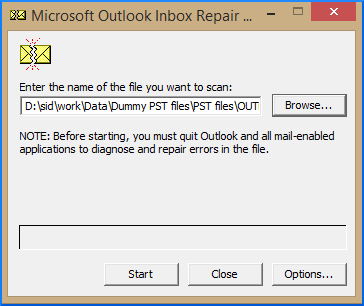
Click Start to initiate the repair.
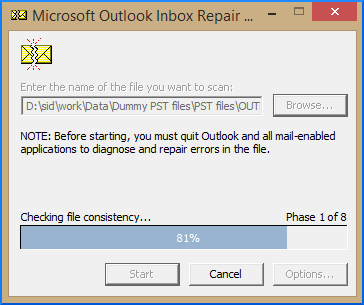
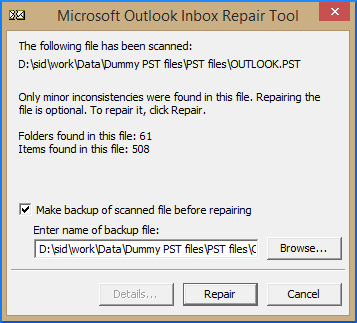
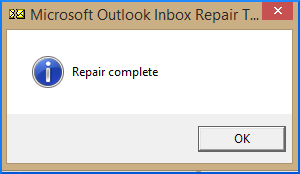
Method#4 Outlook PST Repair
As earlier stated, Scanpst.exe is only useful in minor corruption cases. If you are unable to repair the affected PST files containing your Calendar items, then this implies that you need the help of a professional tool. To ease the repair process, we highly recommend Outlook PST Recovery tool. Using this tool, one can repair a large-sized PST in a jiffy. It is also possible to recover earlier deleted mailbox items. One striking feature that sets it apart from other tools is the capability to export the recovered files directly to Office 365, email servers and webmails.
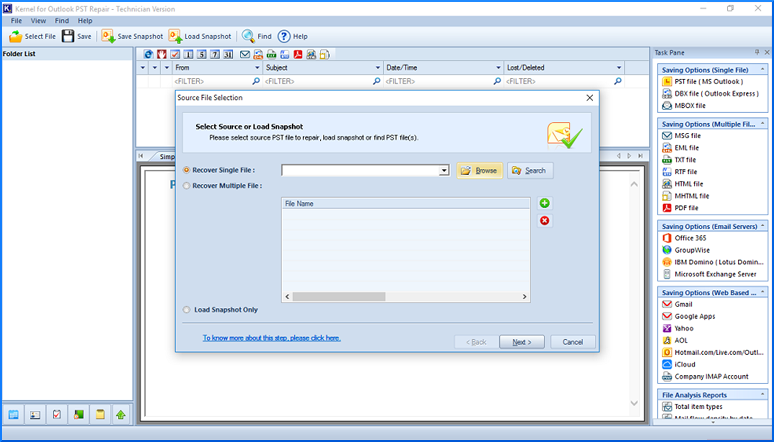
Conclusion
The calendar feature of Outlook is used by many users as their personal assistant and planner. Just like any other mailbox item, the Outlook calendar too can become inaccessible due to file damage or deletion. Here, we have discussed the top four ways that can be used to recover the Outlook calendar. In the case of severe corruption, when all of the manual methods fail, then one can rely on a trustworthy tool such as Outlook PST Recovery.

